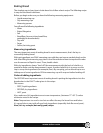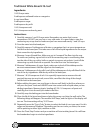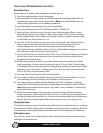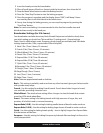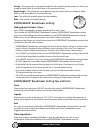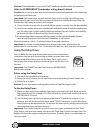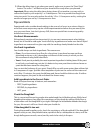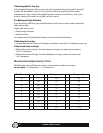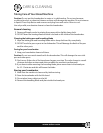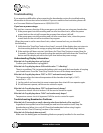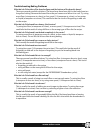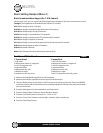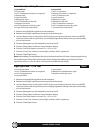
www.oster.com
13
3 When the delay timer is set where you want it, make sure to press the “Start/Stop”
button. The colon “:” will ash and your bread will be ready when you planned.
Important: When using the delay timer during times of hot weather, you may wish to
reduce the liquid in your recipe by 1 or 2 tablespoons. This is to prevent the dough from
rising too much. You may also reduce the salt by 1/8 or 1/4 teaspoons and try cutting the
amount of sugar you use by 1/4 teaspoon at a time.
Tips and Hints
Experienced cooks consider bread making to be as much of an art as a science. Keep in
mind that some recipes may require a little experimentation before they are exactly the
way you want them. Just don’t give up. Still, there are special hints to ensuring quality
bread almost every time.
Use Exact Measurements
We’ve already mentioned how important it is to use exact measurements when baking
bread, but it should be said again. Level o all dry ingredients and make sure that all liquid
ingredients are measured in a glass cup with the markings clearly labeled on the side.
Use Fresh Ingredients
You should always use fresh ingredients. The reasons are:
• Flour - If you have stored your our for a long time, it may have become wet from
absorbing moisture, or dry, depending on the area of the country in which you live.
We recommend using fresh bread our.
• Yeast - Fresh yeast is probably the most important ingredient in baking bread. If the yeast
is not fresh, your bread may not rise. It is better to buy new yeast than to take a chance on
yeast that has been stored for a long time.
You can test the freshness of your yeast. Simply ll a cup with warm water, then add and stir
in 2 teaspoons of sugar. Sprinkle a few teaspoons of yeast on the surface of the water and
wait. After 15 minutes, the yeast should foam and there should be distinct odor. If neither
reaction happens, the yeast is old and should be thrown away.
Add Ingredients in the Correct Order
Read all recipes from top to bottom, and remember:
- FIRST, liquid ingredients
- SECOND, dry ingredients
- LAST, yeast
Check the Doughball
This is a secret well known by people who make bread the old fashioned way. While hand
kneading the mixture, they adjust the consistency of the dough by adding a little our or
a little water until the doughball is just right. Although the breadmaker kneads the dough
for you, this secret is still true. Here’s what you should do.
If the doughball is too wet
During the second kneading cycle, check the consistency of the doughball. If the doughball
appears sticky or wet, like pancake batter, sprinkle in our, a tablespoon at a time, until the
dough ball appears smooth, round, and dry and circles nicely in the pan.



